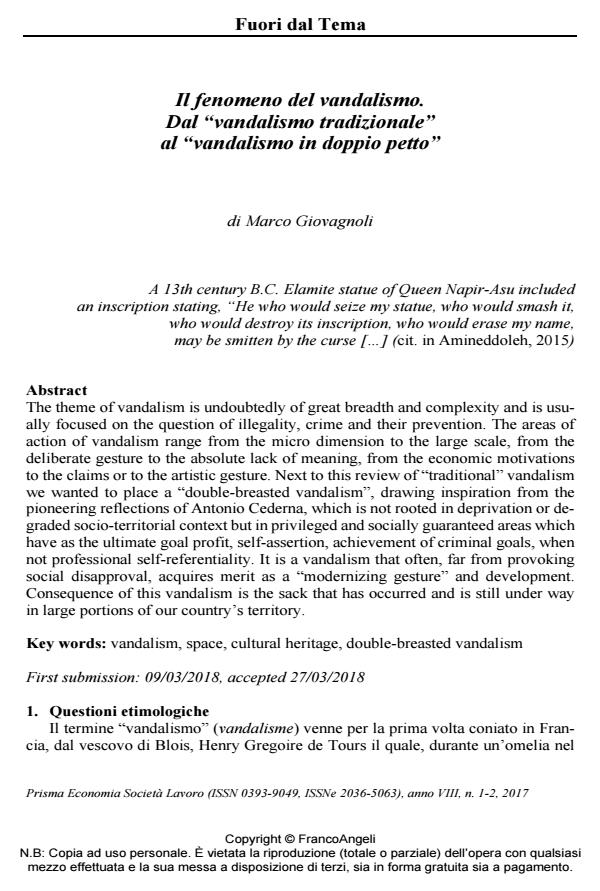Il fenomeno del vandalismo. Dal "vandalismo tradizionale" al "vandalismo in doppio petto"
Journal title PRISMA Economia - Società - Lavoro
Author/s Marco Giovagnoli
Publishing Year 2018 Issue 2017/1-2
Language Italian Pages 29 P. 82-110 File size 1417 KB
DOI 10.3280/PRI2017-001008
DOI is like a bar code for intellectual property: to have more infomation
click here
Below, you can see the article first page
If you want to buy this article in PDF format, you can do it, following the instructions to buy download credits

FrancoAngeli is member of Publishers International Linking Association, Inc (PILA), a not-for-profit association which run the CrossRef service enabling links to and from online scholarly content.
The theme of vandalism is undoubtedly of great breadth and complexity and is usually focused on the question of illegality, crime and their prevention. The areas of action of vandalism range from the micro dimension to the large scale, from the deliberate gesture to the absolute lack of meaning, from the economic motivations to the claims or to the artistic gesture. Next to this review of "traditional" vandal-ism we wanted to place a "double-breasted vandalism", drawing inspiration from the pioneering reflections of Antonio Cederna, which is not rooted in deprivation or degraded socio-territorial context but in privileged and socially guaranteed areas which have as the ultimate goal profit, self-assertion, achievement of criminal goals, when not professional self-referentiality. It is a vandalism that often, far from provoking social disapproval, acquires merit as a "modernizing gesture" and development. Consequence of this vandalism is the sack that has occurred and is still under way in large portions of our country’s territory.
Keywords: Vandalism, space, cultural heritage, double-breasted vandalism
Marco Giovagnoli, Il fenomeno del vandalismo. Dal "vandalismo tradizionale" al "vandalismo in doppio petto" in "PRISMA Economia - Società - Lavoro" 1-2/2017, pp 82-110, DOI: 10.3280/PRI2017-001008